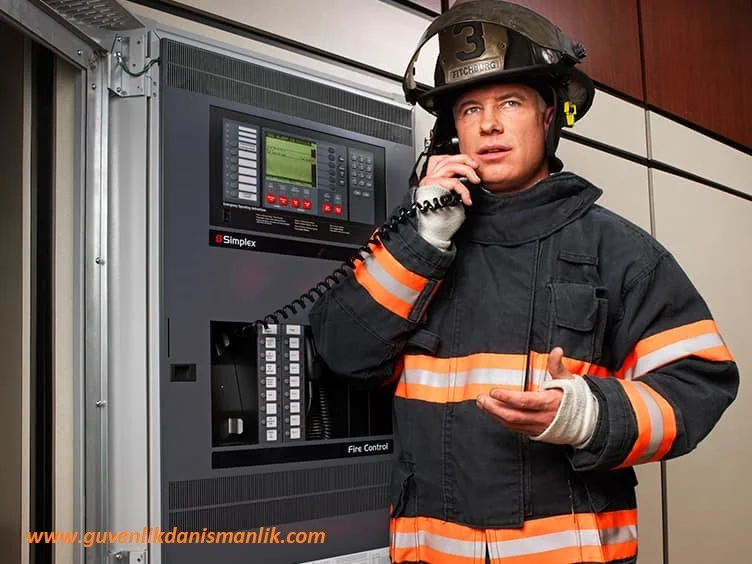The fire risk analysis is a procedure carried out to determine a facility’s or business’s fire risks and plan the measures that need to be taken to reduce these risks. This procedure is a method used to assess a facility’s fire risks and helps identify the measures used to prevent fires and reduce damages.
The fire safety risk analysis evaluates a range of factors, including the structure of the facility, equipment, materials, activities, and employees, as well as the environmental conditions surrounding the facility. The fire risk analysis helps identify the facility’s fire risks and determines the measures that need to be taken to reduce these risks. These measures may include fire prevention methods, fire detection systems, fire suppression systems, emergency plans, training, and other precautions.
Fire risk analysis is essential to increase a facility’s fire safety and determine the necessary measures to prevent fires. It is also necessary to ensure compliance with laws and regulations. The fire safety risk analysis process can be carried out by a professional fire safety risk analysis company or by facility personnel. However, in any case, it is recommended that the fire risk analysis process be carried out by experts to ensure the correct results are obtained.
How is Fire Risk Analysis Conducted?
Fire risk analysis is an evaluation process conducted to identify a facility’s fire risks and plan measures to minimize these risks. Fire safety risk analysis generally involves the following steps:
- Examination of the facility: The first step in conducting a fire risk analysis is to examine the facility. The structure, function, intended use, equipment, materials and factors that may cause fire risks are taken into consideration during this stage.
- Identification of fire risks: Potential fire risks of the facility are identified during the fire risk analysis. These risks may include flammable materials, heat sources, electrical equipment, inadequacy or improper use of fire extinguishing equipment.
- Risk assessment: The identified fire risks are analyzed using risk assessment methods. At this stage, the possible consequences, probabilities and effects of the risks are determined.
- Determination of measures: Measures that can be taken to reduce fire risks are determined as a result of risk assessment. These measures may include fire prevention methods, fire detection systems, fire extinguishing systems and emergency evacuation plans.
- Creation of a risk reduction plan: The identified measures are organized in the form of a risk reduction plan. This plan includes the steps to be taken to reduce the fire risks of the facility, responsible persons and implementation dates.
- Implementation of measures: The identified measures are implemented at the dates specified in the risk reduction plan. At this stage, fire prevention methods, fire detection systems and fire extinguishing systems can be installed or existing systems can be updated.
- Review of risk assessment and measures: Fire risk analysis is a process and the structure, equipment or activities of the facility can change over time. Therefore, risk assessment and review of measures should be carried out regularly.
Fire safety risk analysis is important for preventing fires, increasing safety, and being prepared for potential fire risks in facilities. The fire safety risk analysis process can be carried out by a professional fire safety risk analysis company or by facility personnel. However, in any case, it is recommended that the fire risk analysis process be carried out by experts to ensure that it is conducted properly and accurate results are obtained.

When conducting a fire risk analysis, some important considerations to keep in mind are:
- The entire facility should be evaluated: When conducting a fire risk analysis, the entire facility should be evaluated. This includes the building, equipment, materials, storage areas, operational activities, and other factors.
- Fire risk factors should be identified: When conducting a fire risk analysis, the facility’s fire risk factors should be identified. These factors include sources of ignition, fire loads, the condition of fire prevention and protection equipment, emergency plans, and personnel training.
- Priorities of risks should be determined: When conducting a fire safety risk analysis, prioritization should be done among the identified risk factors. This means determining the most important risk factors first.
- Appropriate measures should be taken: Appropriate measures should be taken for the risk factors identified through the fire safety risk analysis. These measures may include the installation of fire prevention and protection systems, personnel training, preparation of emergency plans, and similar measures.
- The analysis should be continuously updated: Fire safety risk analysis is not a one-time process to be done and forgotten. The analysis should be continuously updated. This means taking into account factors such as changes in the facility’s structure, equipment upgrades, and the use of new materials.
- It should be conducted by authorized individuals: Fire safety risk analysis should be conducted by authorized individuals who have appropriate education and experience. This may involve a professional fire risk analysis company or experts within the facility.
- It should comply with laws and regulations: When conducting a fire safety risk analysis, compliance with laws and regulations should be ensured. This especially means considering local regulations in industrial facilities, as well as national and international fire safety standards.






